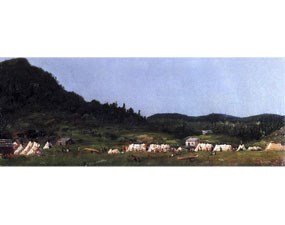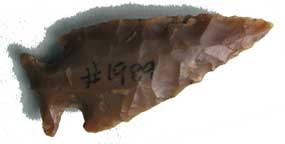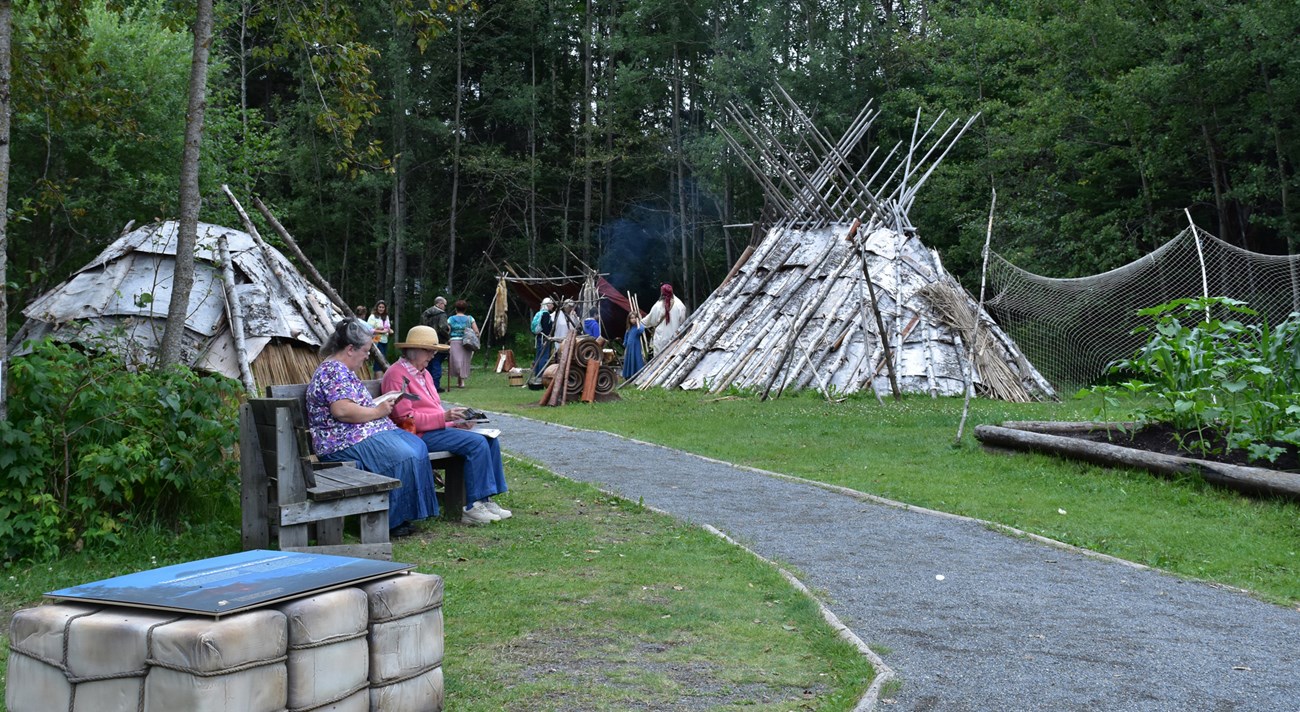
Courtesy of the St. Louis County Historical Society By the 1760s, a summer rendezvous was already an old Indian tradition on Grand Portage Bay. As well as trade, activities included socializing, marriage, ceremonies, dancing and music. Perhaps 1,000 or more Native peoples (Anishinaabeg Ojibwe, Cree, and Assiniboine) gathered or visited the Bay during the summer. European fur traders, with the concurrence of Native tribes, located their posts at cultural cross-roads like Grand Portage and integrated the rendezvous into their cycle. In 1742 a French missionary wrote that the Anishinaabe Ojibwe chief at the summer rendezvous was, "very influential…a man of decision whose intrepidity produces an impression on the others." Roderick MacKenzie in 1785 noted on his arrival that Ojibwe people were, "incamped within our limits and…almost all their winter hunt in our possession." 
NPS photo / William Clayton Archeological investigations during the early 1960s revealed Native habitation in the Grand Portage Bay area at least 2,000 years ago. Lithics or stone artifacts such as, notched projectile points, two small end scrapers an oval blade knife, chert and small flakes of native copper were discovered in two areas close to Grand Portage Bay. The artifacts were located just above a post-glacial lake beach pre-dating Lake Superior. Point styles and beach dates connect the sites to the late Archaic and early Woodland periods 4,000-2,100 years ago (ca. 2,000 B.C.-100 A.D.). 
NPS Photo Activities on the sheltered bay were focused on drying and smoking lake caught fish, growing food using Three Sisters Garden principles and drying vegetables and harvested berries. Women constantly made and repaired fish nets constructed from nettle or traded fiber, some up to 360 feet in length. Birch bark canoe building was a summer activity important for fishing, traveling, and harvesting wild rice in interior lakes during the fall. Games of skill and endurance such as lacrosse were played between the survival activities. Come and see what is going on in the Ojibwe Village this summer! |
Last updated: November 6, 2023
